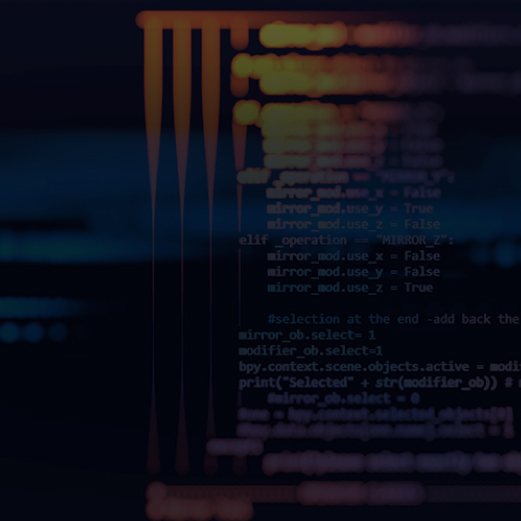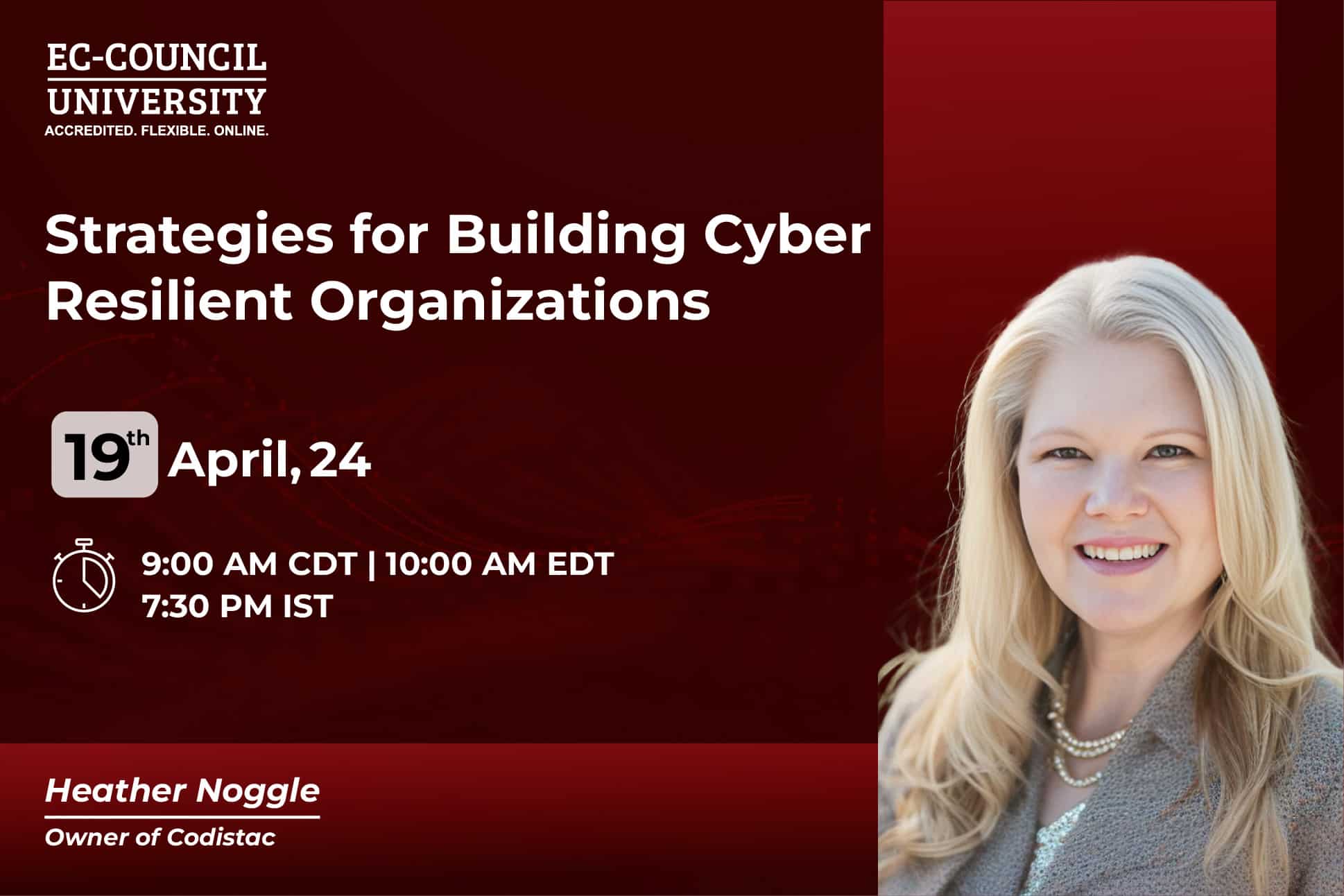Cybersecurity has become critical as the need to protect digital infrastructure, personal data, and business operations grows. Cybersecurity professionals are always in demand, but to stay ahead of the curve, they need to keep up with the latest technologies, including advanced penetration testing techniques. This article will discuss some of the next-generation penetration testing techniques taught in EC-Council’s Certified Penetration Testing Professional (CPENT) certification program.
What Is Penetration Testing, and Why Do Organizations Need It?
Penetration testing attempts to exploit vulnerabilities in a system or network to identify security issues. It is used to assess the security posture of a system or network and can help organizations find and fix weaknesses before attackers exploit them. Penetration testing should be part of any organization’s cybersecurity program, particularly if malicious actors have previously compromised its systems.
At-Risk Industries and Technologies
Many industries are at risk of cyberattacks. Some of the most commonly targeted sectors include the following.
- Healthcare organizations are attractive targets for attackers due to the sensitive nature of patient data. Attackers may attempt to gain access to this data to sell it on illicit markets or use it to extort an organization.
- Banks and financial services providers are prime targets for cybercriminals due to the large amounts of money they handle. Attackers may attempt to steal customer information or financial data, which can be used to commit fraud or identity theft.
- Cloud services are becoming increasingly popular due to their many benefits, but they also entail an elevated risk of cyberattacks (Aggarwal, 2021). Since cloud providers host sensitive data and applications for their customers, they are appealing to attackers.
- Government agencies and organizations are often targeted by nation-state actors and other groups with political motivations. These attackers may attempt to access sensitive government data or disrupt critical infrastructure.
- Energy and utilities companies are prime targets for attackers who may want to disrupt the flow of electricity or oil. These attacks can have a significant impact on the economy and public safety.
In addition, certain technologies are also particularly appealing to malicious hackers.
- Internet of Things (IoT) devices are a growing trend and are ripe for cyber exploitation. As more devices connect to the internet, they become susceptible to cyberattacks. Hackers can exploit vulnerabilities in IoT devices to gain access to sensitive data or take control of the device.
- Supervisory control and data acquisition (SCADA) systems and web applications are also common targets for attackers, as they are often not well protected and contain sensitive data or functionalities. Attackers can exploit vulnerabilities in SCADA systems and web applications to gain access to data or control of the system.
- Databases are valuable targets for attackers, particularly when they contain a large amount of sensitive data that can be used for identity theft, financial fraud, or other malicious activities. Attackers may exploit vulnerabilities in the database software or the underlying infrastructure.
The Top Penetration Testing Techniques Used by Cybersecurity Professionals
EC-Council’s CPENT certification course covers the latest techniques used in penetration testing.
Advanced Windows Attacks
This module covers advanced attacks against Windows systems. It deals with topics such as Active Directory exploitation, Kereberoasting, and Pass-the-Hash attacks.
- Active Directory exploitation enables attackers to gain access to sensitive data and take control of systems, making Active Directory a common target for hackers.
- Kerberoasting extracts password hashes from Active Directory. This information can be used to crack passwords or perform Pass-the-Hash attacks.
- In a Pass-the-Hash attack, a hacker authenticates using the hash of a user’s password, which they can then use to gain access to systems and data without having the actual password.
Internet of Things Hacking
This module focuses on attacks against IoT devices and systems and includes topics such as embedded device hacking and wireless attacks.
- Successfully hacking embedded devices can give hackers access to the data and functionality of these devices. This information can be used to perform attacks against the underlying system or network.
- Wireless networks are often targeted in IoT cyberattacks. By understanding how to exploit vulnerabilities in wireless networks, hackers can gain access to sensitive data or take control of IoT systems and devices.
Bypassing a Filtered Network
This module looks at techniques for bypassing firewalls or other network security measures. It covers topics such as port forwarding, tunneling, and DNS cache poisoning.
- Port forwarding can be used to bypass firewall restrictions, thus enabling access to the systems or data behind the firewall.
- Tunneling is a technique that can encrypt traffic and bypass security measures. Understanding how to tunnel traffic offers another means of accessing data or taking control of systems.
- DNS cache poisoning is a technique used to redirect traffic from one system to another (Raymond, 2021). Poisoning the DNS cache can reroute traffic from a legitimate site to an attacker-controlled site.
Operational Technology Penetration Testing
This module covers the assessment of operational technology (OT) systems. It deals with topics such as SCADA system security, industrial control systems (ICS) and SCADA malware, and OT network analysis.
- A thorough understanding of SCADA system security is necessary to identify vulnerabilities in these systems. This information can be used to perform attacks against the underlying system or network.
- Malware designed for ICS and SCADA systems can be used to take control of these systems.
- OT networks are often different from other types of networks. Understanding the unique aspects of how OT networks work enables hackers and penetration testers to identify vulnerabilities that can be exploited to perform Denial-of-Service attacks against these networks.
Double Pivoting
This module looks at the use of double pivoting to access hidden networks. It covers topics such as using two pivot points for reconnaissance and using Metasploit to pivot through two systems.
- Hidden networks can be accessed by using two pivot points for reconnaissance. This information can be used to find vulnerabilities in associated systems.
- Metasploit is a penetration testing software framework that can exploit vulnerabilities via double pivoting, among other techniques.
Privilege Escalation
This module covers penetration testing techniques for escalating privileges on a system. It covers topics such as Windows and Linux privilege escalation and how to use Metasploit to escalate privileges.
- Privilege escalation is a technique that increases the access of a low-privileged user to a system, allowing them to access files only viewable to users with elevated privileges. By understanding how to escalate privileges, penetration testers can improve their chances of taking control of a system.
Weaponizing Exploits
This module covers the use of Metasploit to create and deliver exploits. It covers topics such as creating payloads, setting up listeners, and delivering exploits.
- A payload is the component of an exploit that is used to achieve the desired outcome. This could be anything from launching a Denial-of-Service attack to stealing data. Understanding how to create payloads can enable penetration testers to deliver exploits that control a system.
- Listeners are programs used to receive information from systems that have been compromised.
- Exploits are tools that can take control of systems. These include buffer overflow exploits and SQL injection exploits. By understanding how to deliver exploits, penetration testers can gain access to sensitive data or take control of systems.
Cloud Penetration Testing
This module covers the assessment of cloud-based systems. It includes topics such as assessing cloud security, attacking cloud applications, and detecting malicious activity in the cloud.
- Assessing the security of cloud-based systems is an essential aspect of protecting data (Grange, 2021). Understanding how to evaluate the security of a cloud-based system is key to preventing data from being accessed by unauthorized users.
- Cloud applications are often vulnerable to attack. It’s therefore essential for penetration testers to know how to attack cloud applications to gain access to sensitive data or take control of systems.
- Since the cloud is a common target for attackers, knowing how to detect malicious activity in the cloud is an important way for penetration testers to stop hackers from causing damage.
Wireless Penetration Testing
This module covers the assessment of wireless networks. It covers topics such as wireless network discovery and cracking WEP/WPA/WPA-PSK keys.
- Wireless networks are often exposed to attack. Different types of wireless networks have different security protocols, so it’s essential to know which kind of network you’re dealing with. By understanding how to discover wireless networks, penetration testers can identify them and assess their security.
- Cracking WEP/WPA/WPA-PSK keys is essential for gaining access to wireless networks. By cracking these keys, hackers and penetration testers can gain access to sensitive data or take control of the network.
Binary Analysis and Exploitation
This module covers the analysis of flawed binaries, including static analysis, dynamic analysis, and reverse engineering.
- Static analysis is essential for understanding how code works before a program is actually run. Penetration testers can use static analysis to identify flaws in code before they can be exploited.
- Dynamic analysis is the process of observing a program’s execution. This can be done through tools such as debuggers and emulators. Dynamic analysis differs from static analysis in that the former can be used to observe a program’s execution and identify vulnerabilities in real time.
- Reverse engineering is vital for understanding the internal workings of a program. By understanding how to reverse-engineer code, penetration testers can find vulnerabilities in a binary that can be exploited.
Get Certified as a Penetration Tester with EC-Council
The CPENT is an EC-Council certification covering next-generation penetration testing techniques. It is designed for cybersecurity professionals who want to learn how to identify and exploit vulnerabilities in systems and networks. The course consists of 40 hours of training and finishes with a 24-hour exam that can be split into two 12-hour sessions.
EC-Council is a leading provider of cybersecurity certifications. A globally recognized credential from EC-Council demonstrates that you are a qualified cybersecurity professional with the skills needed to protect an organization against cyberattacks. Those who complete the CPENT program have proved their ability to perform crucial penetration testing techniques they can use on the job in the cybersecurity field, potentially earning a six-figure salary (ZipRecruiter, 2022). Penetration testers may also transition to other roles in the cybersecurity industry, such as incident response, digital forensics, security engineering, or ethical hacking.
Penetration testing is a vital part of any organization’s cybersecurity strategy. It helps identify weaknesses and vulnerabilities in systems, and it can also be used to test the effectiveness of security controls. The CPENT curriculum covers the latest penetration testing techniques, trends, and developments to help cybersecurity professionals stay ahead of the curve. To learn more, contact EC-Council today.
Aggarwal, G. (2021, January 15). How the pandemic has accelerated cloud adoption. Forbes. https://www.forbes.com/sites/forbestechcouncil/2021/01/15/how-the-pandemic-has-accelerated-cloud-adoption/
Grange, J. (2021, November 9). How to leverage the benefits of cloud security with these five best practices. Forbes. https://www.forbes.com/sites/forbestechcouncil/2021/11/09/how-to-leverage-the-benefits-of-cloud-security-with-these-five-best-practices/
Raymond, M. (2021, January 27). How hackers spoof DNS requests with DNS cache poisoning. Inside Out Security. https://www.varonis.com/blog/dns-cache-poisoning
ZipRecruiter. (2022, March 28). Penetration tester salary. https://www.ziprecruiter.com/Salaries/Penetration-Tester-Salary











